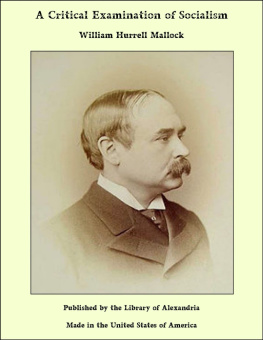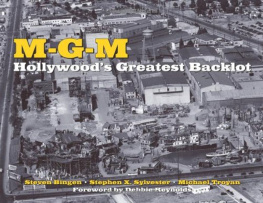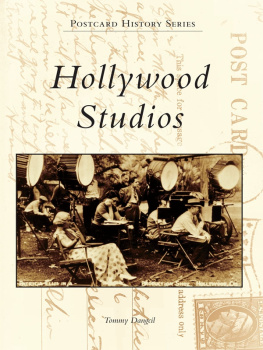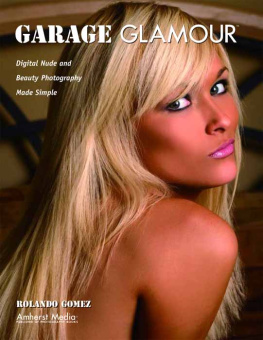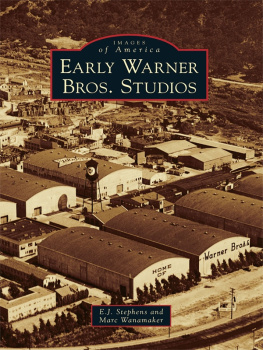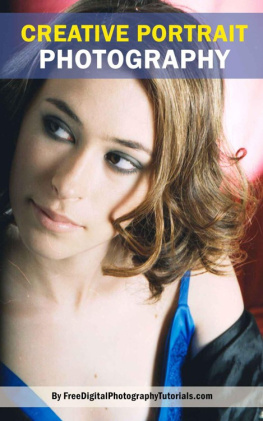GEORGE HURRELLS
HOLLYWOOD


TO THE MEMORY OF MY PARENTS,
ALAN AND ELEANORE VIEIRA.
: Norma Shearer, 1933.
OPPOSITE: Joan Crawford, 1934.
OVERLEAF: Bianca Jagger, 1977.
2013 by Mark A. Vieira
Published by Running Press,
A Member of the Perseus Books Group
All rights reserved under the Pan-American and
International Copyright Conventions
This book may not be reproduced in whole or in part, in any form or by any means, electronic or mechanical, including photocopying, recording, or by any information storage and retrieval system now known or hereafter invented, without written permission from the publisher.
Books published by Running Press are available at special discounts for bulk purchases in the United States by corporations, institutions, and other organizations. For more information, please contact the Special Markets Department at the Perseus Books Group, 2300 Chestnut Street, Suite 200, Philadelphia, PA 19103, or call (800) 810-4145, ext. 5000, or e-mail .
Library of Congress Control Number: 2013937706
E-book ISBN 978-0-7624-5069-5
9 8 7 6 5 4 3 2 1
Digit on the right indicates the number of this printing
Designed by Jennifer K. Beal Davis for Ballast Design
Edited by Cindy De La Hoz
Typography: Neutra Text and Bulmer
Running Press Book Publishers
2300 Chestnut Street
Philadelphia, PA 19103-4371
Visit us on the web!
www.runningpress.com


CONTENTS
BY SHARON STONE
George Hurrell was a master of light, elegance, and glamour. When I met him I had just arrived on the Hollywood scene. The legendary film-star manager Irving Swifty Lazar introduced me to the legendary photographer, Mr. George Hurrell, and they agreed that I had a kind of lost type of glamour of bygone days. A photo session with George was set up immediately. He would shoot me in a satin gown on Mr. Lazars giant satin bed, with a 1940s hairstyle and a smoldering look to match. I was amazed, when after some preparation of hair and makeup and a quick wardrobe change, George took a mere five or six shots.
Yes, he stepped in and lifted my chin just so, opened my pointer finger away from my others, turned my hand the right way, asked me to part my lips, and in that rough voice said, Okay, kid. Now look right here. And I did somehowclear that I was with the greatest movie-star photographer of all time. Click, and he changed the giant 8x10 film slide from side to side. He asked me to hold still. He stepped in and adjusted my head. Click, and we were done. There was never any waste. No ego. No pretense. George was simple enough to appear blue collar and yet simple enough to be a king.
After that shoot we worked together a number of times. Each time I learned the mastery of the clean photothe elegance of the body, the hand, the foot, the look. He knew it and he taught it to me.
I got to see almost all of his original prints from the beginning of his career onward, almost all of the real work, and I got to spend time with him right up until the end of his life. In fact, I was the last person George photographed before he died. And that shoot was as clean, clear, and simple as all the others. I was wearing leopard and lying on a saber-tooth tiger rug. Yes, a real saber-tooth tiger... rug. That was an era, he was a king, and yes, I learned how to be a movie star from the best of the best, Mr. George Hurrell.
Since then I have worked with many masterful cinematographers. I have found that somewhere during the film they always comment about George. There is a throwaway remark here or there, like Move that key light; it should be more Hurrell, or Hey, that really reminds me of a Hurrell photograph. Or George Hurrell would have really loved you. That one brings a tear to my eye, as the feeling was mutual.
SHARON STONE

Sharon Stone was an exemplary Hurrell subject. She exuded glamourand she collected Hurrell prints.

George Hurrells life was marked by dramatic, unexpected shifts of fortune. Here he is in 1980, on the verge of the most extraordinary shift of all.
George Edward Hurrell was the creator of the Hollywood glamour portrait. When he came to Hollywood in 1930, a movie star photograph was soft and undistinguished, like a portrait from a Main Street salon. Hurrell introduced a bold new look: sharp focus, high contrast, and seductive poses. He told a story with each photo, blending the ethereal and the erotic. He created imagery that was unprecedented and unique. How did an unknown artist from the Midwest become the most influential photographer in Hollywood history?
In 1929 Hurrell was twenty-five, a full-time commercial photographer and sometime landscape painter. He was eking out a living in Los Angeles when the film star Ramon Novarro came to his Westlake atelier. A series of sessions produced a remarkable portfolio. Novarro was so pleased that he showed it to Norma Shearer, the highest-grossing star at the most prestigious studio in the world. Shearer commissioned Hurrell to make photographs she could submit for a new type of role. She got the role and Hurrell got a jobhead portrait photographer at Metro-Goldwyn-Mayer.
The dreamlike world of silent pictures had created a star system based on personalities who were bigger than life. The naturalism of talking pictures diminished them. If the star system was to survive, the studios would have to enlarge them again. Along came Hurrell, who adapted his technique to this purpose. Using new lighting and retouching effects, he created spectacular, enticing images of Greta Garbo, Clark Gable, and Jean Harlow, and sold them to a worldwide audience. In the process, Hurrell perfected a photographic idiom: the Hollywood glamour portrait.
In a town where imitation is the sincerest form of survival, Hurrell was an original. Not only was his lighting unique; his personality was as much a tool as his famous boom light. He was loved by his subjects and tolerated by moguls such as Louis B. Mayer, whose patience he tried with occasional bursts of temperament. For thirteen years, Hurrell was the highest paid, best-known photographer in Hollywood. Bette Davis and Joan Crawford gave him their fabulous faces, and he immortalized them. By 1943 he had worked with every studio in town, had a beautiful wife named Katherine, and was affluent. His sitting fee was $1,000, when the dollar bought thirty times what it does in 2013. The millionaire producer Howard Hughes paid him $4,000 to photograph an unknown girl in a haystack for The Outlaw. Censors suppressed the film, but Hurrells photos made Jane Russell a household wordwhich Hurrell already was. Hurrell is one of Hollywoods few genuine geniuses, said Motion Picture magazine. He is Rembrandt with a camera. He was working at Columbia Pictures during the week and in his Beverly Hills studio on weekends, shooting foldouts for
Next page


